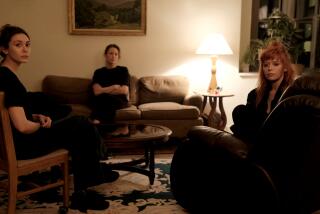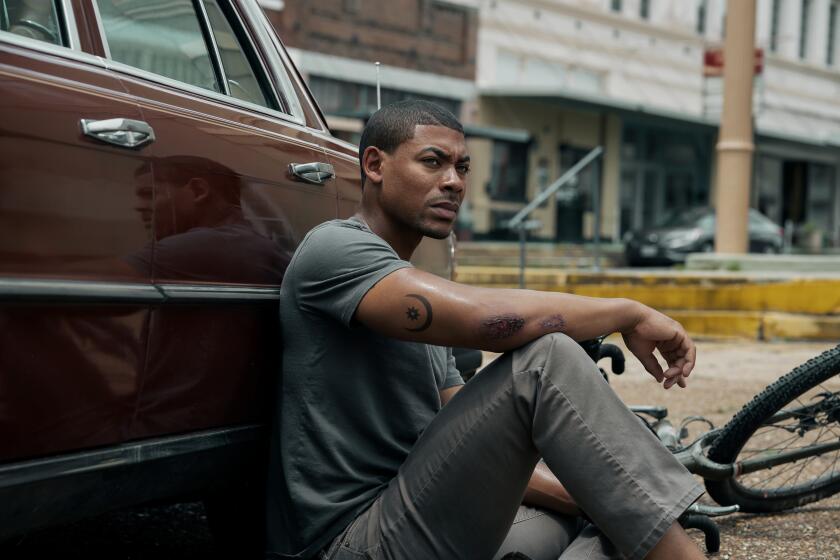Intimate portraits piece together the puzzle of Natalie Wood, the person and mother
Natalie Wood is a cinematic icon who had received three Oscar nominations by age 25 and whose films included “Splendor in the Grass,” “Rebel Without a Cause” and “West Side Story.” Since her drowning in 1981, however, her legacy has been colored by speculation and lurid tell-alls, fueled at least in part by the reopening of the police investigation into her death decades later.
None of those accounts, though, had the intimate knowledge of the actress’ home life afforded in both a new HBO documentary and a memoir from Wood’s daughter, actress Natasha Gregson Wagner. “Natalie Wood: What Remains Behind” and “More Than Love” is each a vivid portrait of Natalie Wood, the person.
“It’s been an organic process of my personal growth,” Gregson Wagner says of why she was finally willing to share her mother’s story as she knew it. The 49-year-old says she and her family had always been advised not to sustain supposition about her mother’s death by responding to it, even when it included accusations that Robert Wagner, Wood’s husband and Gregson Wagner’s beloved stepfather, was involved.
“Years of therapy, being in a happy marriage and becoming a mother” prepared her to “talk about this publicly without feeling defensive,” she says. “I’m stronger now.”
Also, she admits, “Emotionally staying young or childlike, I felt was a way I could stay connected to my mom.” Gregson Wagner was 11 when her mother died.
Gregson Wagner took the title for her book, “More Than Love,” from a phrase her parents would exchange with each other: “I love you more than love.” The words appear on Wood’s tombstone. It’s a deeply intimate chronicle of life with her famous mother and how Wood’s death devastated the family.
She also produced and conducted interviews in “Natalie Wood: What Remains Behind,” directed by Laurent Bouzereau (“Five Came Back”). The documentary benefits from the participation of some of those closest to Wood, including Wagner. The film is more about the legendary actress and her career than the mother-daughter relationship in the book, but it too focuses on the person, not her death.
“I didn’t want to do an investigative, reportage kind of film; this is the story of a family,” says Bouzereau. “This was a story of love. I never felt the pressure of having to be a reporter or a detective. That wasn’t the point of the film at all.”
There is likely no single definitive chronicle of any complex life, and many valid points of view can seem to conflict. These friendly portraits omit certain infamous stories associated with Wood’s legend — true or false, such tales aren’t addressed — and the two works come down firmly on the side that her death was an accident.
More than anything, they paint a private portrait of the public figure. Gregson Wagner’s book overflows with remembrances of Wood’s love and her own extreme attachment to her famous mother. When the author reviewed a treasure trove of Wood’s personal writings, she was stuck by the twentysomething Wood’s drive to “educate herself, wanting to be deeper than just a movie star ... growing and probing and looking within.”
Despite other depictions of Wood, here she is a strong personality: the boss, the engine of her family and captain of her career. She would arrange everyone’s daily schedules and social calendars. She was one of the first actresses in the studio system to successfully demand some control over film selection, equal pay with male costars and eventually, profit participation.
Bouzereau, who has been making documentaries about cinema for 25 years, says: “In a sense, you look at her choices of her films and they become autobiographical. When you look at her trajectory as an actress, you see the evolution of cinema. She was making movies with filmmakers like Paul Mazursky and Sydney Pollack, who were just beginning their careers, making movies out on the streets — for someone who had grown up on sound stages, that must have been shocking and yet she wasn’t afraid of any of that. When she passed away, she was going to direct; she was going to be in a play.
“I found her extremely modern and relevant. Today, she’d be working with Tarantino and Spielberg and directing.”
Bouzereau says the Wood film that best reflects that journey is “Splendor in the Grass,” the drama she made with Elia Kazan and Warren Beatty: “That movie shows a journey of empowerment, which I think she went through herself.”
“Splendor” takes its title from William Wordsworth’s poem “Ode on Intimations of Immortality from Recollections of Early Childhood.” The filmmakers chose the title of “What Remains Behind” from the same stanza: “Though nothing can bring back the hour / Of splendour in the grass, of glory in the flower; / We will grieve not, rather find / Strength in what remains behind.”
Though the film and book are devoted to the person, they couldn’t ignore the circumstances of Wood’s death. That meant getting Wagner to revisit that night on camera.
“Natasha and I knew that would be the make-it or break-it aspect of the film. If it didn’t have the impact we thought it should have, we wouldn’t make the documentary,” said Bouzereau. “It was an amazing revelation, how open he could be on the matter.”
Gregson Wagner says, “We wanted it to feel like an intimate conversation my stepfather and I would have had without the cameras ... about a night that changed our lives forever.
“This film feels like we’ve released this burden from our family like a balloon at the beach or a kite — it goes up into the sky and it’s gone. We’re all lighter because of it now.
“I also own the fact that we’ll never know for sure what happened to my mom, because she was alone the night she died ... But she wants us to carry on. We are what remains behind.”

Trailer for the HBO documentary, “Natalie Wood: What Remains Behind”
"More Than Love"
By Natasha Gregson Wagner
300 pgs
Sold by: Simon and Schuster Digital Sales Inc
ASIN: B07Z421Y2T
More to Read
Only good movies
Get the Indie Focus newsletter, Mark Olsen's weekly guide to the world of cinema.
You may occasionally receive promotional content from the Los Angeles Times.











